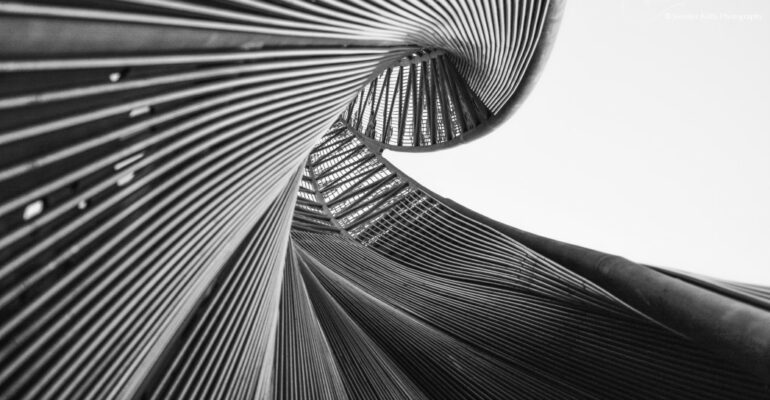Thomas Edison couldn’t get a patent today – and here’s why
February 4, 2025 2025-02-04 19:09Thomas Edison couldn’t get a patent today – and here’s why
Thanks to the ingenuity of people such as Thomas Edison, the Wright Brothers, George Washington Carver, Beulah Louise Henry, and countless, less well-known others, Americans have contributed some of the greatest, life and game changing inventions to our nation and to the world.
Countless innovations, beyond wildest imagination, have been discovered and perfected in our county. However, this track record is being severely interrupted by a broken patent system that now makes it virtually impossible for individual inventors – the tinkerers working in their basements, attics, and garages, to obtain, retain and defend their patents.
Not only have our patent laws and regulations been stacked against them, but most inventors are simply over-matched by companies and corporations with deep pockets, desperate to avoid paying up if and when they are found to be infringing.
Between 1868 and 1933, Thomas Edison was granted 1,093 U.S. patents1. Today, as an individual, not as The Edison Lamp Works, he would have to come up with thousands of dollars to get a single patent approved by today’s United States Patent and Trademark Office (USPTO) … only to have to face the prospect of having to find millions to fight even more costly legal battles in Federal Court to hold on to his intellectual property rights.

The increasingly hostile environment for solo inventors has all but invalidated our claim as the world’s leading innovator.
In point of fact, individual inventors received just 6 percent of the patents issued by the USPTO in 2022. That figure was 12 percent in 2002, and 22 percent in 1980.
It is clear that reversing this trend must be addressed before our solo inventors become as obsolete as Eli Whitney’s cotton gin. Even more troubling are today’s company employment agreements which, in most cases, require employees to waive their rights to whatever they conjure, discover, invent, or create, on and off the job, even if that it is completely unrelated to the employee’s job and/or work responsibilities!
Broken Patent System
Understanding the U.S. broken patent system requires basic knowledge of how to obtain a patent and how to navigate the patent application process. Article I, Section 8 references the Patent and Copyright Clause in our Constitution3 which empowers Congress “to promote the Progress of Science and useful Arts, by securing for limited Times to Authors and Inventors the exclusive Right to their respective Writings and Discoveries.” Regrettably, over the years, that mandate and its effectuation have become muddled and muddied.
The Patent Act of 1952 further muddied the waters by specifying that inventions must be not just “new and useful” to be patent-eligible but must also be “non-obvious.” Further problematic changes were made in 1999 when Congress allowed challenges to patents – called Re-examinations – to be waged in federal court.4 This provision resulted in a deluge of challenges, severely clogging our judicial system.
In 2011, Congress enacted the Leahy-Smith America Invents Act5. The AIA was a well-intentioned effort to expedite patent challenges. It was designed to move challenges out of the court system and into a new administrative entity – the Patent Trial and Appeal Board (PTAB) within the USPTO. The PTAB has had mixed effectiveness and has been the subject of considerable debate.

In its 2018 report, The Chamber of Commerce’s Global Innovation Policy Center6 said that “the ease of challenging patents” in the United States has created a system that “provides a channel for bad faith actors and injects a great deal of cost and uncertainty for patent owners.”
In 2023, Congress passed The Patent Eligibility Restoration Act (PERA).7 A companion piece of legislation, The Promoting and Respecting Economically Vital American Innovation Leadership Act (PREVAIL)8 is under serious consideration and is likely to be adopted. Unfortunately, both PERA and PREVAIL present challenges and disadvantages for individual inventors that are not apparently obvious. In fairness, these bills were written, in part, to assist small companies and/or individual inventors but, both continue to provide significant advantages and protections to large corporations.
PERA introduces additional requirements that disproportionately burden individual inventors with more detailed documentation, more complex technical specifications, higher standards for proving novelty and non-obviousness, and increased administrative burdens. These requirements, plus additional legal expenses for drafting complex patent applications, filing and ongoing maintenance fees make the patent application and maintenance process daunting for an individual inventor. These burdensome prerequisites are just the beginning. Once granted a patent, the holders can expect to face potentially massive litigation costs to defend and/or protect their IP in court.
PREVAIL establishes evaluation criteria that implicitly favor established research networks because of the requirement for scaled production and extensive market research. These new requirements put unrealistic demands on the financial and resource capabilities of almost any individual inventor.
In sum, intentionally or unintentionally, both pieces of legislation have created competitive disadvantages which tend to give preferential treatment to corporations with research and development capabilities and extensive administrative support functions and financial resources.
There is no such thing as a perfect solution. Often, sincere efforts to “fix” a serious problem has unintended consequences. Regrettably, our patent system continues to hamper our solo inventors. It is crucial that we find an equitable system that supports and rewards our imaginers, tinkerers, and inventors, who, working largely on their own, have helped make the United States one of the most innovative, dynamic nations in the world.
Today, more than ever, our vital “Innovation Engine” must be nourished, encouraged, and protected against predatory corporate actors. If we don’t, we will have to quit beating our chests about our superiority and stop waving our “Innovation Banners.” Yes, and also come to the realization that the Golden Innovation Goose does not lay her eggs for nothing.
To repeat, more than ever, we need to find a sensible, fair minded, and reasonable way to nurture, encourage, motivate, and reward the next generation of Wizards of Menlo Park.
Sources:
- https://edison.rutgers.edu/patents.htm#
- https://www.uschamber.com/report/us-chamber-international-ip-index
- United states Constitution – Article I Section 8 [The Congress shall have power] “To promote the progress of science and useful arts, by securing for limited times to authors and inventors the exclusive right to their respective writings and discoveries.”
- https://www.ipmall.info/sites/default/files/hosted_resources/lipa/patents/Patent_Act_of_17 93.pdf
- https://www.uspto.gov/sites/default/files/aia_implementation/20110916-pub-l112-29.pdf
- https://ipwatchdog.com/2018/02/08/u-s-patent-system-falls-12th-place-chamber-global-ip-index-2018/id=93494/
- https://www.congress.gov/bill/118th-congress/senate-bill/2140
- https://www.congress.gov/bill/118th-congress/senate-bill/2220
Lewis M. Rambo, Ph.D. is an executive coach, consults with and advises Not-for-Profits, young entrepreneurs, and tech start-ups. He was Dean of an international business school and has taught Corporate Social Responsibility, Ethics, and Organization Behavior to MBA candidates all over the globe. Dr. Rambo presently resides in the Twin Cities.


